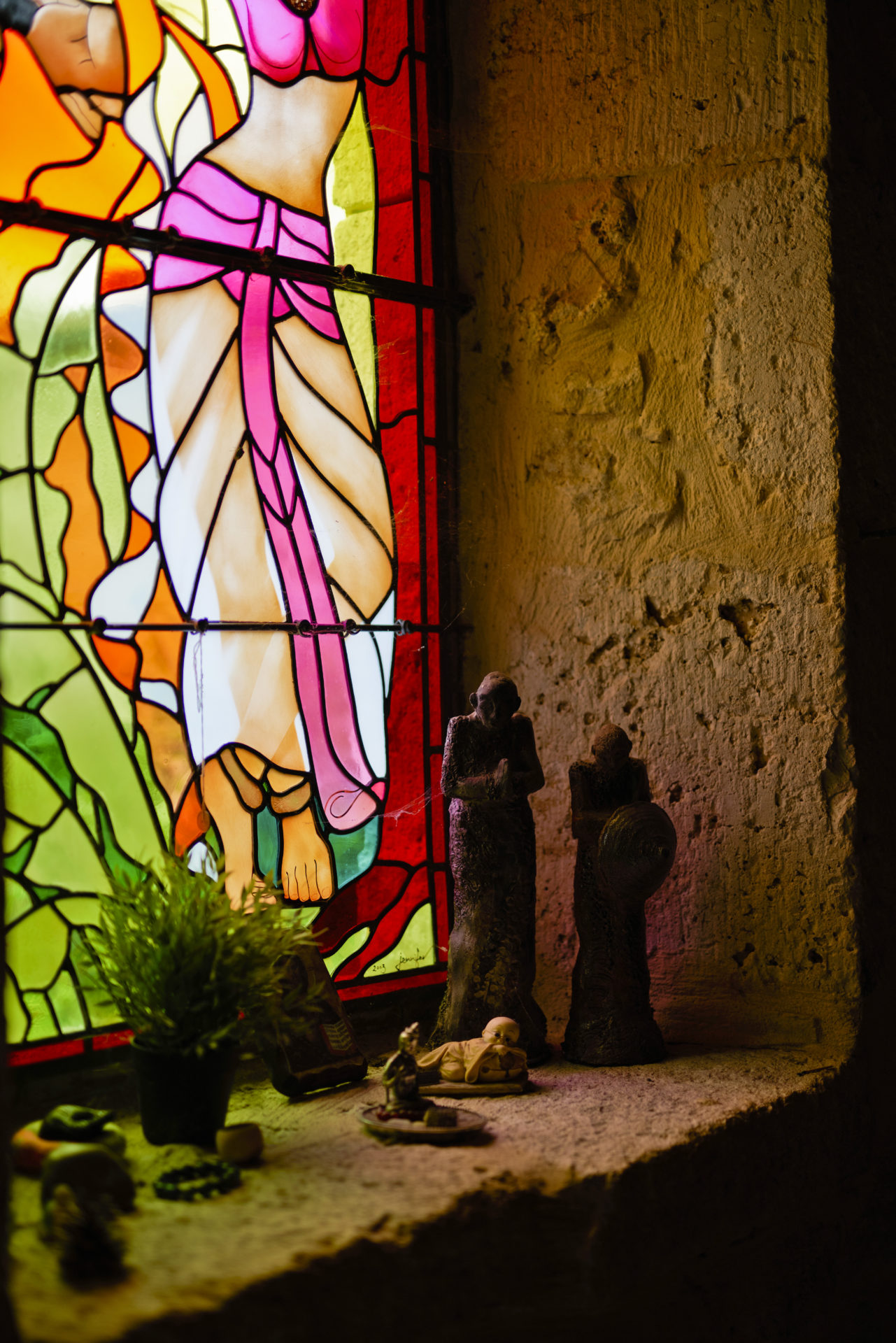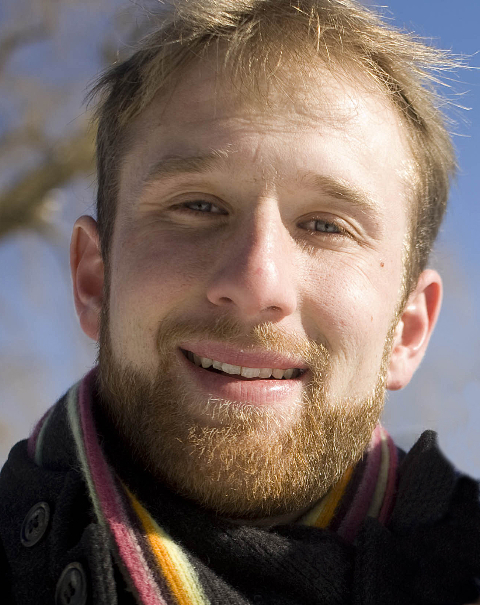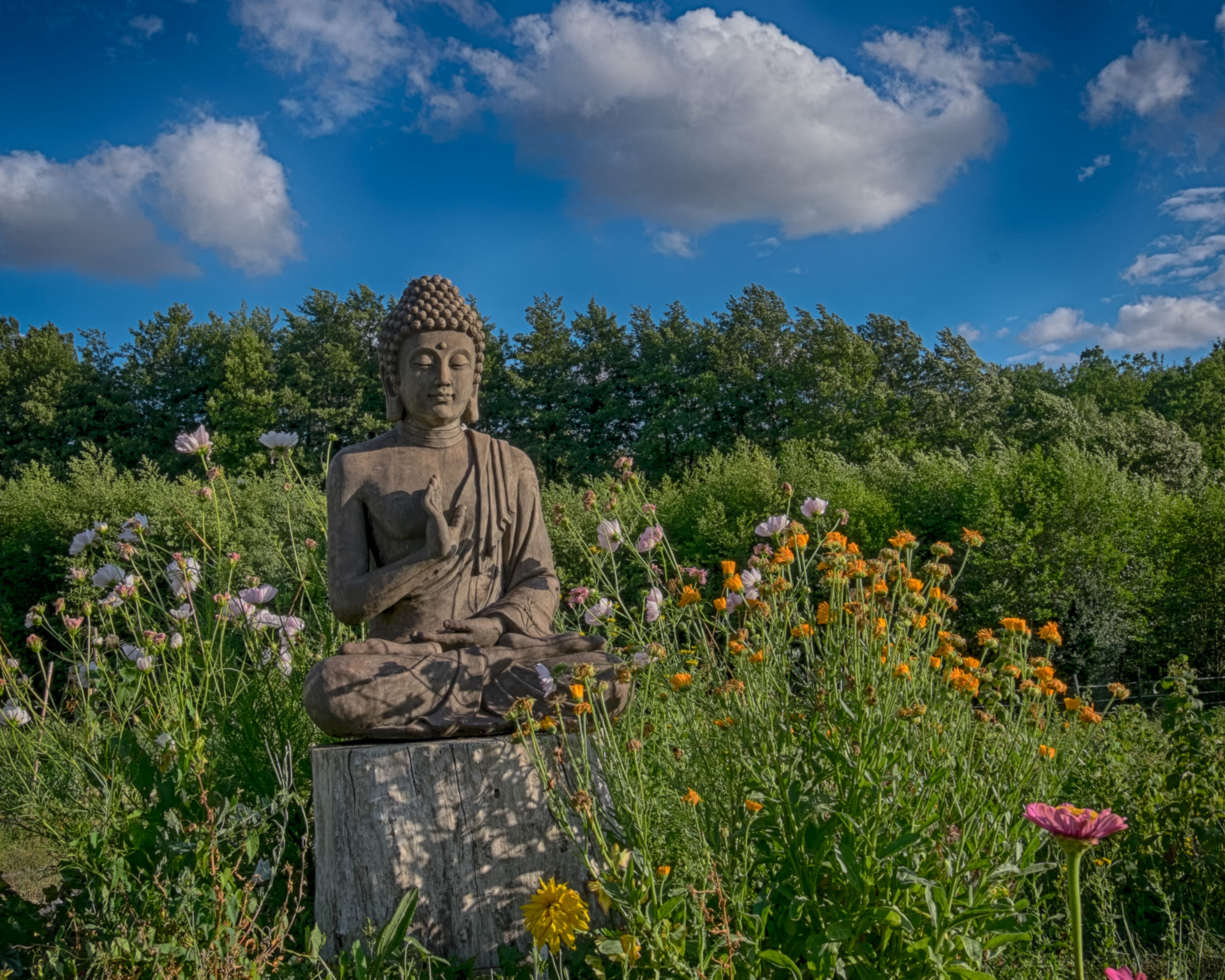By Oliver Sabot

You cannot grow lotus flowers on marble.
Thich Nhat Hanh
The pain returned two days before my flight. Faint tingling grew steadily into the familiar searing throb throughout my knee that pulled my muscles and energy and attention into it like some biological black hole. I canceled my trip,
By Oliver Sabot

You cannot grow lotus flowers on marble.
Thich Nhat Hanh
The pain returned two days before my flight. Faint tingling grew steadily into the familiar searing throb throughout my knee that pulled my muscles and energy and attention into it like some biological black hole. I canceled my trip, sat in my home office—legs stretched straight to soothe my screaming knees—and buried myself in distractions from the clenching fear that I would never walk pain-free again.
I had been due to travel to Plum Village for a meditation retreat. Five years earlier, my first retreat had been revelatory, quieting the inner voice howling at me to achieve more and providing me with a new, calmer perspective. That perspective was gone a few weeks later, buried beneath frenzied efforts to build a new professional identity. But the memory lingered that there was a different way to be with myself and the world.
Three years and dozens of futile doctor’s visits into my chronic pain journey, I hungered to experience that calm again. I set the retreat date for my birthday and began a rigorous program to allow me to walk on the plane. The rampant inflammation in my otherwise healthy knees was supposedly caused by a vicious spiral of increasing sensitivity to pressure. Limiting pressure, the theory went, would return some painless function to my legs. So I spent weeks scooting along the floors of our house, much to the delight of our toddler, who would slide, squealing, down the stairs next to me. The pain wavered but kept roaring back.
Several days after I canceled the trip, a thought emerged through my despair and distraction: I could organize my own retreat. I had already taken leave from work and could meditate and reflect from my house as easily as in a hall, though I would miss the beautiful setting and supportive community.
Over the next week, I spent my days meditating and reading Thay’s books. This little in-house retreat was relaxing but unremarkable. I grew calmer, but the nauseating fear of a pain-soaked future still churned relentlessly through my mind. Then, the day after I declared my retreat over, the floodgates opened.
The morning began as normal: frenetic herding of kids to school from my perch on the kitchen floor, slowly levering myself up the stairs, short meditation and reading before work. This time I stopped mid-sentence, dropped the book, and began sobbing violently. Each sob came stronger than the one before, and I spasmed to the floor as my mind spun through a film reel of vivid images.
Searing anger erupted at each image whirring past: the corrupt man who had sued the schools we had started; the funders who had broken their commitments, leaving me sleepless and scrambling; my parents for not caring for themselves and dying so early; the universe for taking them. After an hour, I regained the sliver of presence necessary to crawl through a puddle of tears to the nearby bed where I curled and screamed silently at the long stream of remembered assailants—colleagues, doctors, family—in defense of that accommodating past self. I spiraled into an exhausted, dreamless sleep. When I woke, my pain was gone.
The pain returned over the following days. But now I was equipped. Each morning I sat in meditation. Each morning a flood of emotion—anger, grief, shame—spouted from my subconscious, often leaving me drained and tear-soaked. Each morning the pain washed away in the flood.
Three months later, I raced my first half-marathon, pain-free, joyful, and with a different outlook on life.
From Marble to Mud
During those first months I struggled to make sense of what had just happened to me. I believed in the power of meditation to foster happiness and overcome mental illness. But heal the body? And I had always been a calm, analytical person. How could those geysers of turbulent emotion be me?
The answers, I came to see, lay within Thay’s teaching, “no mud, no lotus.”
I had encountered the teaching before and thought I understood it, thought I was apt at applying it to my life. But in reality, my ego had filtered the teaching through a veil of insecurity. Through its warped lens, the teaching became something a football coach would bellow at his players to do more push-ups: “No mud, no lotus, cream puffs!” This interpretation made sense, echoing all the ways our culture told me I needed to strive, steel-eyed and impassive, to achieve and be more.
So I hardened myself. I became stone, polished marble.
Years passed and mud poured into my life. Cherished family members died. Organizations I started floundered and, in one case, crumbled, infuriating dozens of colleagues who had trusted me. My mother sank rapidly into the fog of Alzheimer’s disease halfway across the world.
Through each of these struggles, I allowed myself to briefly feel the accompanying sadness or fear. But mostly I didn’t feel anything. How could I? I needed to lead my family or my team confidently through the mud, to make the world safe and smooth for them. I couldn’t do that if I was an emotional mess.
Underneath all my solving and calm smiling, however, numbness began to creep through my mind. As it did, my physical pain and inflammation grew.
Thay wrote, “When we cut ourselves off from the pain in our mind, we’re also abandoning our bodies where suffering is being stored … the suffering inside wants our attention and it will fester and churn away until it gets it.” What better way to get my attention, force me to stop and pay attention to the emotional storm I had been suppressing, than debilitating physical pain?
This understanding of my experience is increasingly confirmed by neuroscience and psychology research. Studies show that anger and even self-criticism can cause inflammation in the body. 1,2
My pain was real. My inflammation was real, an angry blot on the MRI scan. But contrary to the assumptions of our culture, their cure—and likely cause—lay within my mind.
The Goal is to Feel
That cure finally taught me the true meaning of “no mud, no lotus.” In the weeks after my first emotional outpouring, I came to realize that the goal of a happy life is not to feel better; the goal is to feel. I began to welcome my anger and fear and sadness as a part of me, as natural and necessary and beautiful as any other. Over time, I was even able to embrace my pain, seeing it as the confused tantrum of a child who needed my patience and love.
After spending so long shielding myself and those I love from heartbreak, I realized that happiness lies within heartbreak. The more I embraced those heart-wrenching dark emotions, the more my psychic pain receded alongside my physical pain. The grief and guilt I felt at losing my mother, which had been a frozen mass crowding my subconscious, now flowed away, freeing my compassion and joy trapped beneath its ice, and connecting me with who my mother was now rather than who I wished she still was.
After this experience, I clearly understand why we humans have such an impressive capacity to repress our emotions. The feelings that poured out of me were exhausting, confusing, and, at times, terrifying. When the deluded thought that I caused my mother’s Alzheimer’s finally passed through me—it was like I was being tortured—scorching knives raked along my entire being. Part of me preferred the physical pain; it was simpler, more comprehensible. I was able to keep welcoming those intense feelings, day after day, through meditation, self-compassion, and a constant reminder of this peaceful space that spread once they passed.
It has been nearly two years since my awakening. I run regularly, joyful and grateful. I still meditate daily. And I still often resist pain and dark emotions that regularly arise—anger at a family member or fear at changing jobs—as my football coach ego screams at me to do more. But within a few days I remember to love this new patch of mud in all of its darkness and messiness and discomfort. As I do, I am able to again see and appreciate the many lotuses blooming throughout my life.
1 M.A. Barlow, C. Wrosch, J.P. Gouin & U. Kunzmann, “Is anger, but not sadness, associated with chronic inflammation and illness in older adulthood?” Psychology and Aging, 2019 May, 34(3):330-340.
2 Charlotte Lieberman, “Why You Should Stop Being So Hard on Yourself,” New York Times, May 22, 2018, https://www.nytimes.com/2018/05/22/smarter-living/why-you-should-stop-being-so-hard-on-yourself.html

Oliver Sabot has been a member of the Plum Village community for eight years and is a serial social entrepreneur who has spent the past fifteen years building health and education programs across Africa. He is a father of two and an avid runner, and writes regularly about our fascinating and confusing inner lives to help him deepen his practice of working to love every aspect of life and mud.

